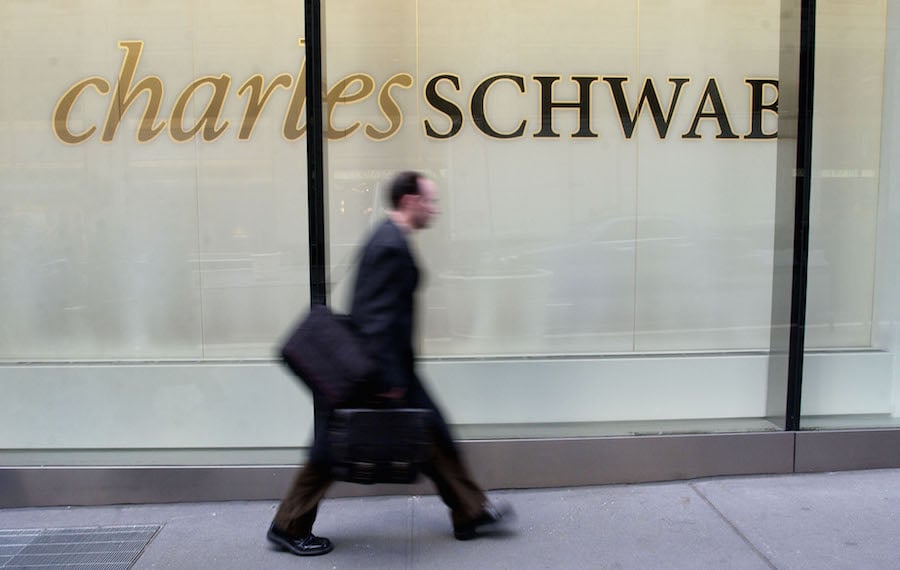The Charles Schwab-TD Ameritrade
combination creates a tough road for smaller registered investment advisers, meaning those firms with less than $100 million in client assets.
With two giant RIA custodians coming together to form a mega-firm with $5 trillion in brokerage and RIA client assets, where does the deal leave the little guy, the backbone of the RIA industry and the leaders of the long-term move for independent financial advice away from Wall Street? Has he or she been left behind, as the RIA industry
steadily focuses on bigger firms with larger amounts of assets under management?
If the $26 billion, all stock deal is eventually approved by regulators and closes in the second half of next year, it clearly presents a loss for small advisers, with some worrying that service could take a hit.
[Recommended video: Ed Slott:
Make sure your small business clients consider this before they convert IRAs to Roths]
Announced last month, the acquisition of TD Ameritrade makes perfect sense for Charles Schwab, which grabs TD's $1.3 trillion in brokerage and RIA assets right when the major brokerage firms, RIA networks and independent broker-dealers are all sharpening their knives to fight the competition for clients.
The backdrop of the Schwab/TD merger is the
current, all pervasive fear in the broad financial advice industry that fees firms and advisers charge clients will continue to slide.
Fee erosion could happen either slowly, as it has since the credit crisis, or more rapidly, as the mutual fund industry has experienced with the move away from more expensive, actively managed funds to cheaper, indexed funds.
Schwab itself has added to that anxiety across the financial advice industry
when it said at the start of October it was eliminating commissions for online trades of stocks and exchange-traded funds.
Schwab Advisor Services most recently reported 7,600 RIAs as clients with $1.6 trillion in client assets,
according to InvestmentNews data, while TD Ameritrade Institutional reported at least 7,000 RIA clients but did not state the amount of assets those advisers managed.
The Schwab brand consistently has had an allure to wealthier clients, noted one adviser whose firm uses TD Ameritrade to custody the majority of his firm's assets.
"Schwab was the original, and the appeal was, 'Talk to Chuck,'" said the adviser, who asked not to be named.
When it jumped into the RIA custody space in the early 2000s, TD Ameritrade built its business at first by providing solid service to RIAs with $30 million to $60 million in assets before eventually courting larger RIAs.
"TD always went after the small-to-medium sized RIAs, and later landed big ones," said the adviser. "TD Ameritrade was always like Avis to Schwab's Hertz, with the message being 'We Try Harder.'"
Post-merger, Schwab is likely to focus its attention on larger RIAs, said one industry executive.
"This merger will create a massive custodian that will want to focus on their retail business and very large custody business, it seems to me," said Mark Casady, the former CEO and chairman of LPL Financial, the largest independent broker-dealer with more than 16,000 registered brokers and advisers.
Charles Schwab is "very good at many things but at this size the company needs to focus on large opportunities," he said. "This will open up the other niche markets that are quite sizable to others like Fidelity and LPL."
With the custody market in disruption, other competitors to benefit as the deal shakes out include Pershing and smaller custodians such as E*Trade and Apex, executives and adviser said. A clear downside for advisers at TD Ameritrade is the potentially onerous task of the paperwork required to move clients from TD Ameritrade's platform to Schwab's, industry sources said. It is far too early in the process of the acquisition to understand how that will eventually impact TD Ameritrade's advisers.
One former top TD Ameritrade executive played down concerns that smaller RIAs might get the short end of the stick after the merger.
"My view is that advisers will continue to get great service from the custodians, because it's good business across the board," said Tom Bradley, a former senior executive at TD Ameritrade, including a 12-year stint as the head of its RIA custody business. "It's still efficient to service advisers of all sizes because of the advancements in technology."
The combined revenue of the two companies, estimated to be about $17 billion, is ample to fuel technology spending to help both small and large firms, said Shirl Penney, president and CEO of Dynasty Financial Partners. He also noted that Charles Schwab's commitment over time to reducing prices to benefit the small investor indicates a likely similar commitment to smaller advisers.
The integration of the two firms is expected to take between 18 and 36 months following the close of the transaction, according to TD Ameritrade.
A spokesman for Charles Schwab, Rob Farmer, declined to comment. A spokesman for TD Ameritrade, Joseph Giannone, also declined to comment.
What is certain is that Schwab in coming months will face intense scrutiny from advisers and competitors during the move of TD's advisers to its RIA custody platform.
Merging two industry leaders is a herculean task. Any slip up or error will be greeted by cheers from the competition, which will look to exploit problems as an opportunity to win the trust and business of their rivals' advisers.
And many of their targets will likely be the little guys, who are easy to overlook when deals are cut by giants.







